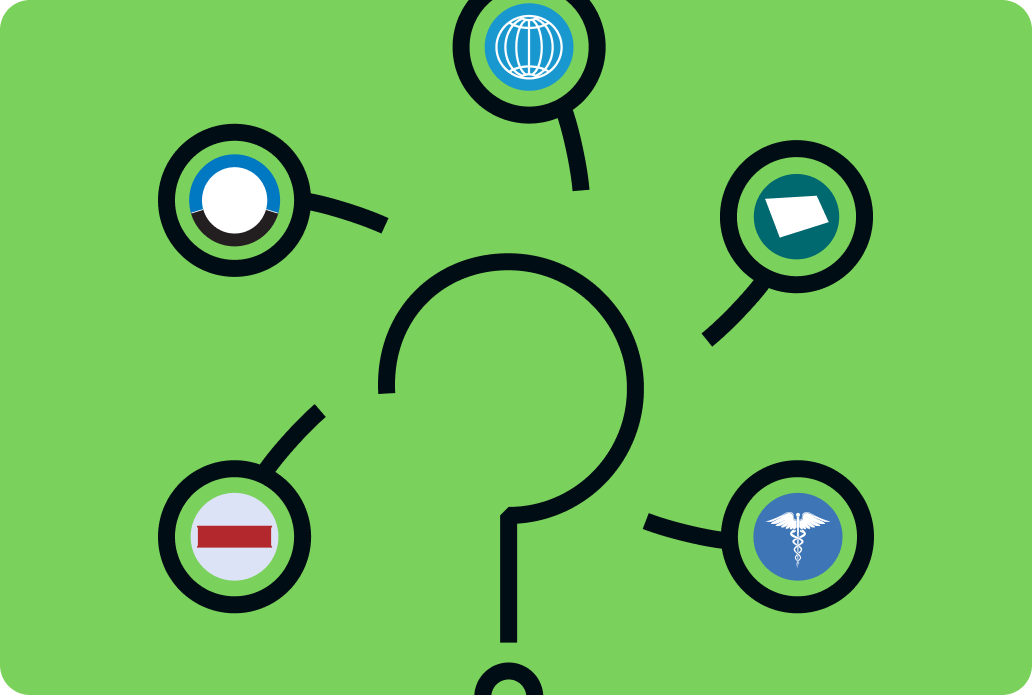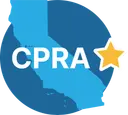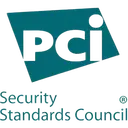Oro provides content designed to educate and help audiences on their compliance journey.
SOC (Service Organization Controls) reports are independent evaluations that give you valuable insights into a service provider’s infrastructure, risks, and the effectiveness of their controls. They are essential tools that help service organizations gain customers’ trust.
With SOC reporting, service organizations can demonstrate their commitment to maintaining a secure and reliable system.
In this post, we’ll dive into the world of SOC reports and learn how to choose the right one for your organization.
Key takeaways
- SOC reports provide independent assessment of service organizations’ infrastructure and risks for customer data security
- There are three main reports (SOC 1, SOC 2, and SOC 3) with varying levels of public accessibility
- Preparing for a successful audit involves conducting a readiness assessment, gathering the right documentation, and choosing an experienced auditor
Overview: Different types of SOC reports
When it comes to SOC reports, there are three main types to consider:
- SOC 1: These reports deal with internal controls for financial reporting.
- SOC 2: These reports evaluate controls related to security, availability, processing integrity, confidentiality, and privacy.
- SOC 3: These reports provide a general overview of an organization’s controls and can be freely distributed to the public.
There are also Type I and Type II reports, which we’ll cover further down. Each type serves different purposes and focuses on different aspects of the organizations involved in an organization’s operations.
A typical SOC report covers the following areas:
- System
- Control environment
- Risk assessment
- Control activities
- Information and communication
- Monitoring activities
Let’s delve further into the distinct characteristics of each type of SOC report.
SOC 1 report
If your organization provides financial reporting services, then SOC 1 reports are crucial. These reports assess internal controls related to financial reporting, which can impact user entities’ financial statements. For instance, if you’re using a payroll provider, reviewing their SOC 1 reports ensures that the controls they have in place for processing payroll are effective.
SOC 1 hones in on internal controls that impact customer financial reporting and is tested based on objectives the auditor and the business agree to. These control objectives are based on the organization’s determination and cover business processes and IT systems affecting the user entity’s financial statements. For example, how effective are auditors in evaluating tax and financial statements?
The main focus of a SOC 1 report is Internal Control over Financial Reporting (ICFR), with control objectives related to both IT general controls (ITGCs) and business processes at the service organization.
These reports are most relevant when the organization’s services directly affect its clients’ financial reporting. SOC 1 reports are commonly used by organizations that process financial data and provide services like payroll processing, financial transaction processing, or other functions related to financial reporting.
The service auditor’s role in a SOC 1 report is to review any risks from the audited business that could affect the internal controls clients have in place. Moreover, SOC 1 reports are relevant for SOX, PCI, GDPR, and ISO 27001 compliance programs.
SOC 2 report
SOC 2, which stands for “Service Organization Control 2,” is another type of audit report issued under the Statement on Standards for Attestation Engagements (SSAE) No. 18 standard.
SOC 2 addresses a service organization’s controls relevant to its operations and compliance, as outlined by the AICPA’s Trust Services Criteria. The audit determines if they are securely managing 3rd party data to protect and ensure privacy, as well as making sure that internal operations and governance within the organization meet set standards. SOC 2 uses the COSO framework to test your internal controls against five Trust Services Criteria:
- Security
- Availability
- Confidentiality
- Privacy
- Processing integrity
SOC 2 type reports are relevant when the services provided are not directly tied to clients’ financial reporting but involve the handling of sensitive data or critical functions. SOC 2 reports are often used by SaaS providers, cloud service providers, and other organizations that deal with customer data or provide technology-related services. However, it is worth noting that a company operating on-premise or in a co-location and/or data center may also need a SOC 2.
SOC 3 report
If you’re looking for a more accessible, public-facing report, the SOC 3 report is your go-to option. It’s a general-use report that provides information about a service organization’s internal controls for:
- Security
- Availability
- Processing integrity
- Confidentiality
The key difference between SOC 3 and SOC 2 reports is that SOC 3 reports don’t include the detailed controls tested, and the results of those tests, making them suitable for a wider audience. However, you must complete a SOC 2 Type 2 report in order to have a SOC 3.

Recommended for you
Which framework makes the most sense for your business?
With this short quiz, understand how your unique business variables and objectives inform which compliance framework is right for your business.
Other SOC reports
In addition to the main SOC reports, there are also specialized SOC reports. For example, the SOC for Cybersecurity report and the SOC for Supply Chain report.
SOC for Cybersecurity report
The SOC for Cybersecurity report is an evaluation of an organization’s cybersecurity risk management program. By assessing how effective an organization’s internal controls are, this report can showcase an organization’s commitment to cybersecurity and provide assurance to stakeholders.
Companies may request a SOC for Cybersecurity report from their vendors to ensure their cybersecurity measures are up to par. Moreover, a SOC for Cybersecurity report can help identify and address cybersecurity risk management program gaps.
SOC for Supply Chain report
The SOC for Supply Chain report addresses operational risks faced by companies dealing with physical products, such as producers, manufacturers, and distributors. Meeting the custom criteria of the SOC for Supply Chain report allows organizations and their customers to have more confidence in the risk management within their production and distribution system.
Type 1 vs. Type 2 SOC reports: What’s the difference?
High level: Type 1 reports concentrate on the design of controls, while Type 2 reports test the operational effectiveness of controls over a defined period.
Type I reports
Type 1 reports provide a snapshot of an organization’s controls at a specific point in time. These reports assess the design of controls, offering a quick overview of the controls in place but not evaluating their effectiveness over a period of time. In other words, Type I reports give you a glimpse of the controls’ design but don’t delve into their long-term performance.
Type II reports
Type 2 reports, on the other hand, offer greater assurance by evaluating the effectiveness of controls over a defined period, typically six months to a year. These reports not only assess the design of controls but also test their operational effectiveness, providing a more comprehensive examination of an organization’s controls.
A Type 2 report is the way to go for organizations seeking more robust assurance.
How to choose the right SOC report for your organization
Selecting the right SOC report for your organization involves analyzing your organization’s specific requirements and ensuring alignment with industry standards and regulations.
To determine which SOC report is right for you, consider the following:
- Size of your organization, measured by the number of employees, customers, locations, or revenue
- Nature of your organization’s business
- Specific needs of your market and customers
It is critical to verify its compliance with the standards and regulations of the relevant industry. For example, if you’re in the financial services industry, you should consider regulations such as SOX, PCI DSS, and GDPR when choosing a SOC report. By aligning your chosen SOC report with industry standards and regulations, you’ll be better equipped to demonstrate your organization’s commitment to security and compliance.
Preparing for a SOC audit
Preparation for a SOC audit includes:
- Conducting a readiness assessment to identify gaps in compliance
- Gathering required documentation such as policies, procedures, and evidence of control effectiveness
- Choosing the right auditor with the necessary experience and expertise
1. Conducting a readiness assessment
A SOC readiness assessment is a crucial first step in preparing for a SOC audit. This process involves evaluating your organization’s current controls, reviewing the trust services criteria, and performing a gap analysis to identify any deficiencies or gaps.
2. Gathering the required documentation
Ensuring that all necessary documentation is in order is vital to preparing for a SOC audit. This includes:
- Policies and procedures
- Evidence that your organization is following relevant standards and regulations
3. Choosing the right auditor
Choosing an auditor for your SOC audit is vital in guaranteeing a detailed report and achieving a successful outcome. When choosing an auditor, consider factors such as:
- Certification and affiliation
- Experience and reputation
- Industry knowledge
- Qualifications and certifications
- Peer review
- Range of services offered
Conclusion:
SOC reports play a critical role in assessing the controls and procedures of service organizations. It’s essential to choose the right report for your organization based on its specific needs and industry requirements.
By preparing for a SOC audit through readiness assessments, gathering documentation, and selecting the right auditor, you can ensure a comprehensive and successful SOC report. Remember, trust is everything in today’s digital world, and a robust SOC report can help you build that trust with your customers.
Need help with SOC 1 or SOC 2? Thoropass can help manage your SOC 1 or SOC 2 compliance journey. Hit the ground running with expert-curated templates for policies and procedures. Controls are built with auditors in mind, so you can confidently go to an audit. When the time comes, your audit will be completed by our in-house auditors all within the Thoropass platform reducing manual and duplicative work.
Get the guide
Learn how to use SOC 2 to accelerate your business growth
How do you use your SOC 2 report to unlock growth for your company, accelerate deals and open new markets? Read this guide to find out.

Related Posts
Stay connected
Subscribe to receive new blog articles and updates from Thoropass in your inbox.
Want to join our team?
Help Thoropass ensure that compliance never gets in the way of innovation.














.png)